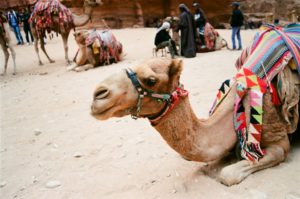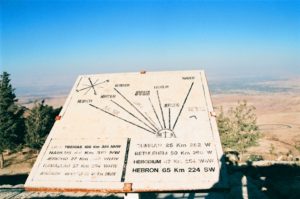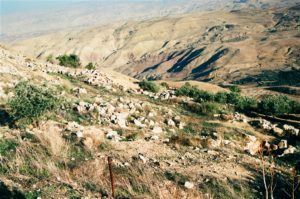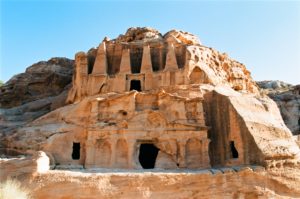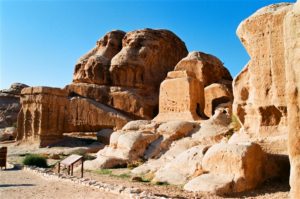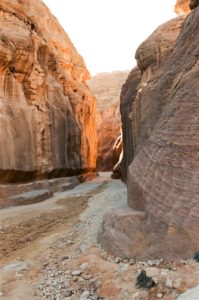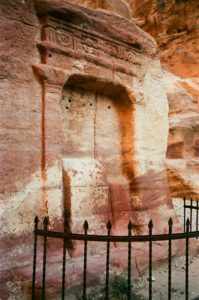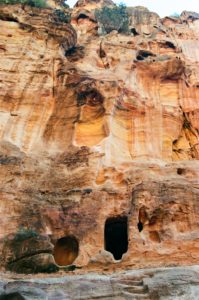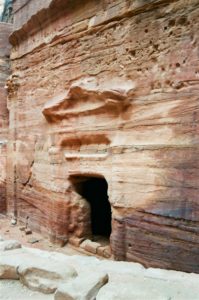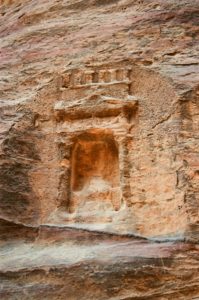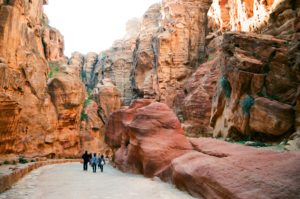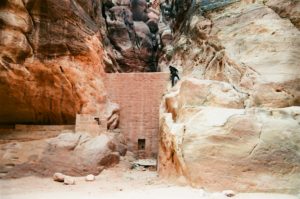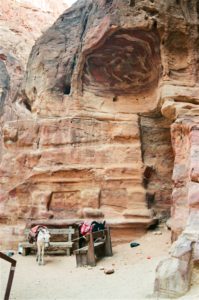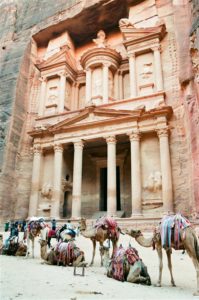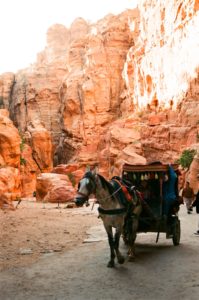A Whirlwind Tour Through the Middle East – Jordan
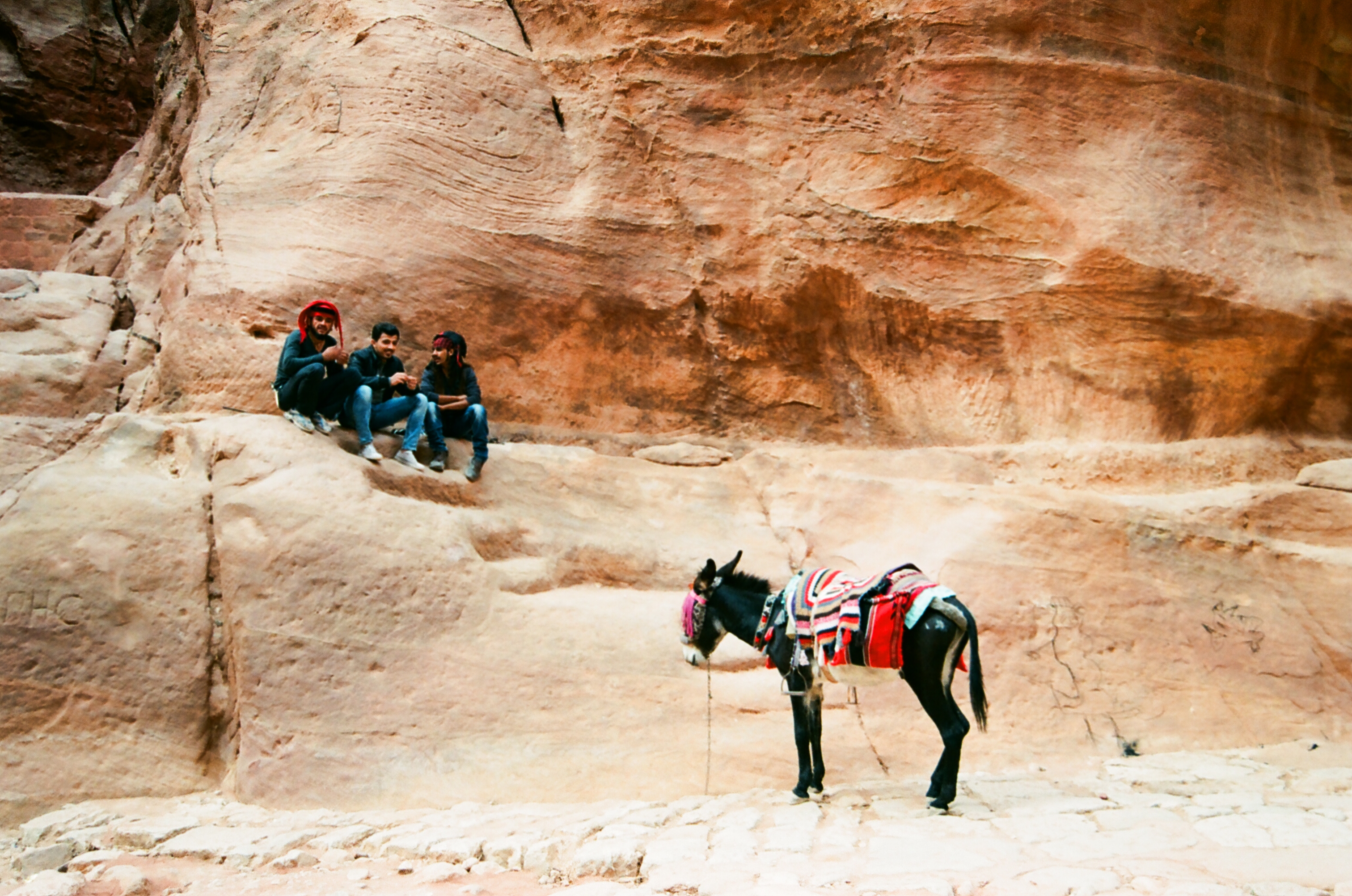
“Most of the events in the Old Testament took place in Jordan,” our Jordanian tour guide said.
At dinner on my first night in Jordan I fell in love with the creamy, nutty flavored hummus and helped myself with two, three servings. By then, I knew that I had no problem eating Middle-Eastern food, especially food that was prepared with so much heart.
The Jordanian currency was the most expensive that I have come across in my life. One Jordanian dinar equaled three U.S. dollars. That means it was more expensive than the British Pound. I could not resist the small bag of chips at the hotel and it cost me $1 Jordanian dinar.
The next morning we rose and went to Mount Nebo as our first stop. Mount Nebo had much significance in the Bible. Moses looked onto the Promised Land from Mount Nebo before he died (Deuteronomy 34:1).
We arrived in a crisp winter morning. There was plenty of sunshine but the strong wind dissipated all warmth. I was keen to experience the poignancy that Moses must have felt when he viewed Canaan at that vantage point. We reached the northernmost point in the church site (a former monastery was being restored then). There was the Dead Sea, with a mountain standing between it and Jerusalem. That was Canaan in those days. It certainly looked like what would be a wilderness in the ancient times. The Israelites wandered in Jordan for forty years. There was a strong sense that it was rather history that I was seeing there.
In Madaba we were supposed to see the largest mosaic map in the world, which had taken fifty years to complete. Madaba was an abandoned site during the Turkish reign. The Christians were not allowed to build churches, so very wisely they asked to restore the ruins after an earthquake. They ended up building the Madaba Greek Orthodox Church, which stands today. We visited on a Friday, the holy day in Jordan; therefore we caught the Christian service rather than the sight of the famous map, a large part of which was destroyed by the German engineer that reconstructed the church.
We could not see the map because it was located right in the main hall where the service was held. Indeed, the Greek Orthodox service was formal and elaborate. I could not decide if the spiritual experience of being in a Greek Orthodox service for the first time in my life was more valuable to me, or if seeing the famous map would have been preferred instead. In any case, the most memorable was actually the pomegranate juice on our way back; it was $2 US a small cup and tasted heavenly.
The next stop was Moses’ Rock. This was believed to be where God told Moses to tell the rock to yield water but Moses beat the rock twice out of anger at the Israelites (Numbers 20:10-13). As a consequence he did not get to enter the Promised Land. I had doubts that anyone could have found the same rock that Moses strike in the wilderness, but all questioning aside, the water that welled next to the rock tasted sweet and cool. The water of Meribah was a spring of life in its own right.
The Petra
The Petra is one of the Seven Wonders of the World. I had no knowledge of this wonder and surely did not know what to expect. We had two choices: walk two kilometers to the city center, or take a horse carriage to get there. I chose to walk and it was a good decision. We passed through many meandering paths, seeing sandstones that morphed in different shades of sienna and different shapes of curves on our way.
The tour guide gracefully showed us the way on foot. He explained that, in order to stop the water of the valley flooding the siq leading to the Al Khazmeh, the ancient people built canals and water pipes to direct the water. We saw bas reliefs along the siq, with the image of a man leading a fleet of camels stone-carved onto the sandstones. The natural contours of these red and yellow sandstones were a wonder itself.
I became used to the light human hand prints on the way, and thus I was blown away when we reached the Al Khazmeh. There standing proudly and prominently, the city center had high pillars supporting a beautiful Romanesque façade, hewn and chiseled into the massive sandstone structure. It was the treasury of the city. In the middle an opening led into some kind of depth that was kept out of bounds to us. I was simply unprepared for this view and very much awed.
It being a typical scene at touristy places, many school-aged boys were selling souvenirs, and donkey and horse rides. They bargained in their own childish, pleasant and appealing ways. There were camels that I would have gladly patted if not for the fear of catching the new SARS. I should have ditched the group photo and walked on to see the theater at least. The tour guide said that it would take a full day to appreciate all that the ancient city could offer. That is the plan for my next visit, and hopefully soon.
